Desperately Seeking Signals: The Saga Of The Train Order Board
12345














12345
|
If you look closely at the ICC Map 1918 you will see that the stone Roundhouse section does not line up with where it is now, was it moved?
The odd thing about the location is that when extended they had to have dumped a significant quantity of fill material as otherwise it would have been hanging over the side of Park Gulch. Where did this material come from? When was it done? The Railroad owned the town, why did they not locate the Roundhouse somewhere where a future extension would not need all this fill? The wooden extension blocked the wind blown snow, why not build the stone section facing south originally, better light, warmth and would have blocked the snow.? |
Re: Desperately Seeking Signals: Train Order Boards and "Open Depots"
|
This post was updated on .
In reply to this post by Chris Walker
Chris,
Yes, I'd like to share a few more thoughts on train order boards on the C&S. I have nothing to really add to the timeline aspect, I agree that in early South Park / Colorado Central days they were absent and your photos suggest that 1886-87 was when they showed up, as the UP integrated all its far-flung subsidiary lines into one rail network. Having reviewed my digital files and books for train order boards (TOB) on depots, I'm coming more convinced that "Terminal" stations didn't have them. The purpose of the TOB was to alert train crews, approaching from either direction, that they had new orders that would effect the rest of their journey, or nullify prior orders. Trains arriving at "terminals" always stopped and, after obtaining new orders (as well as new train numbers or extra designations) returned from where they came. TOBs where not needed at terminals. A terminal could be described as the end of the mainline or branch line run. On Clear Creek these would include Denver, Central City and Silver Plume. On the South Parks lines, Denver, Leadville, Gunnison and Alma Jct on the Alma branch. I've not found any photo of the Central City brick depot with a TOB: 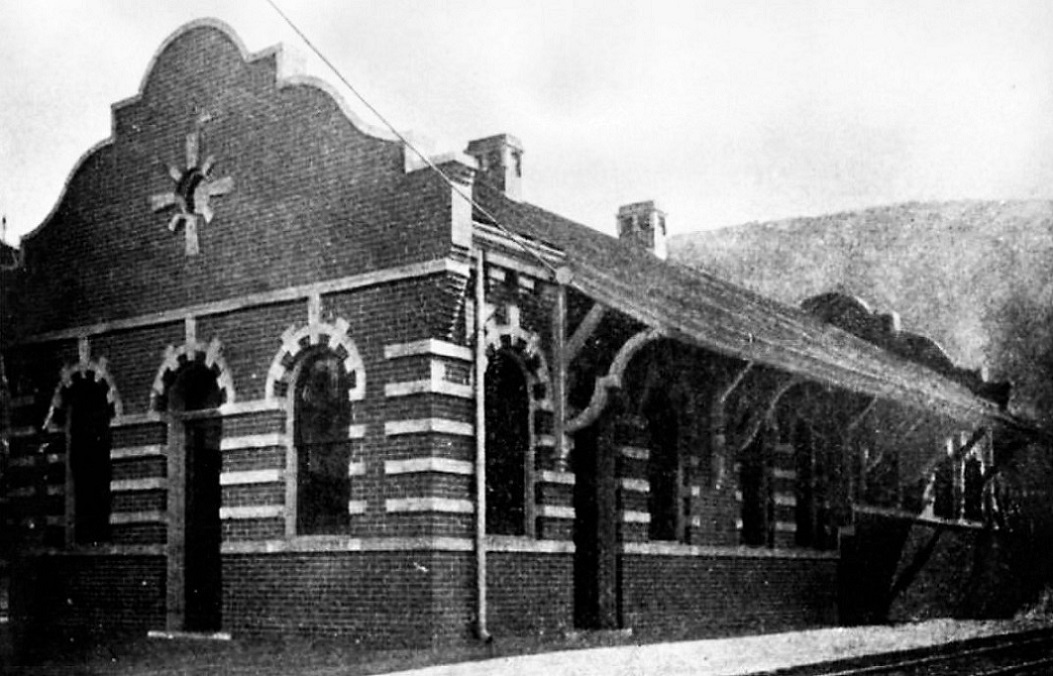 But Blackhawk, the only station with depot between Forks and Central, did have a TOB: 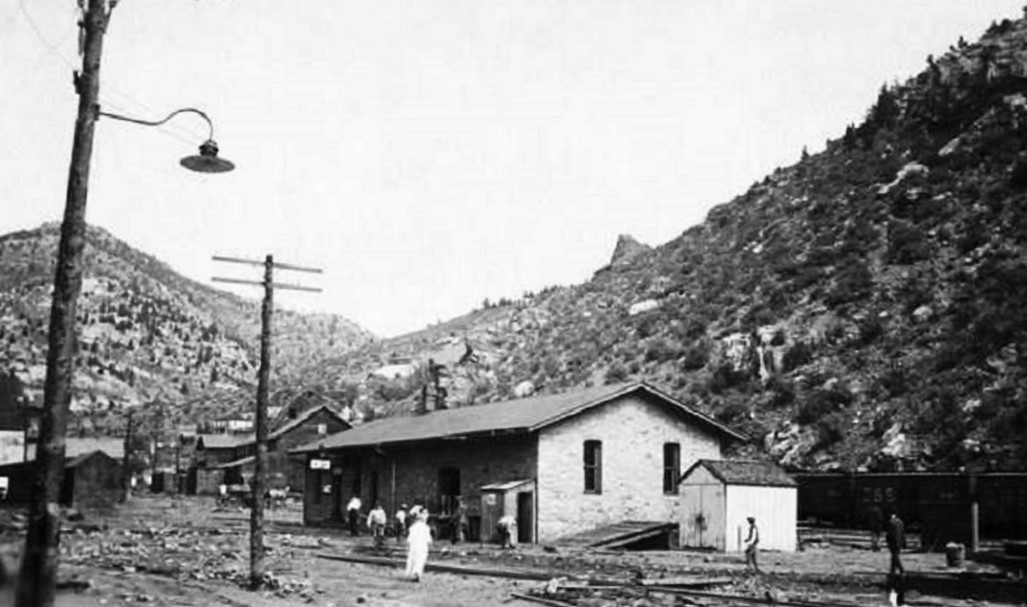 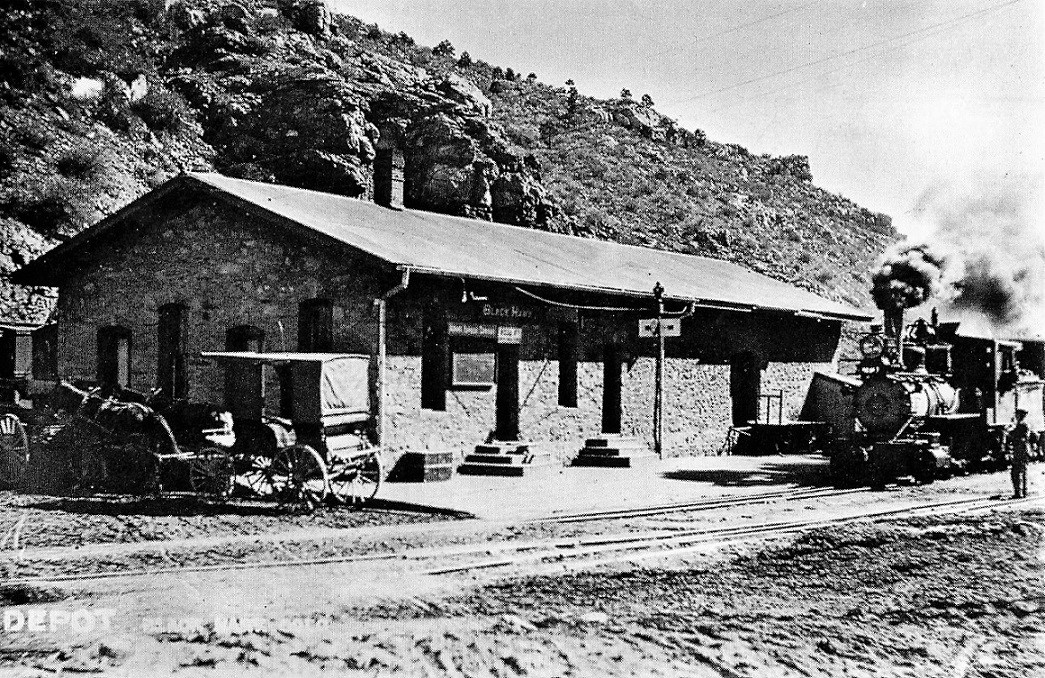 I have not found a clear, unobstructed photo of the track side of the Silver Plume depot to confirm or exclude a TOB there. On the Fairplay / Alma Jct branch, there are many clear photos of the Alma Jct depot in the Mineral Belt books and the Klingers' three books. All show telegraph lines into the depot, none (starting with the DSP&P photo Chris posted) show a TOB: 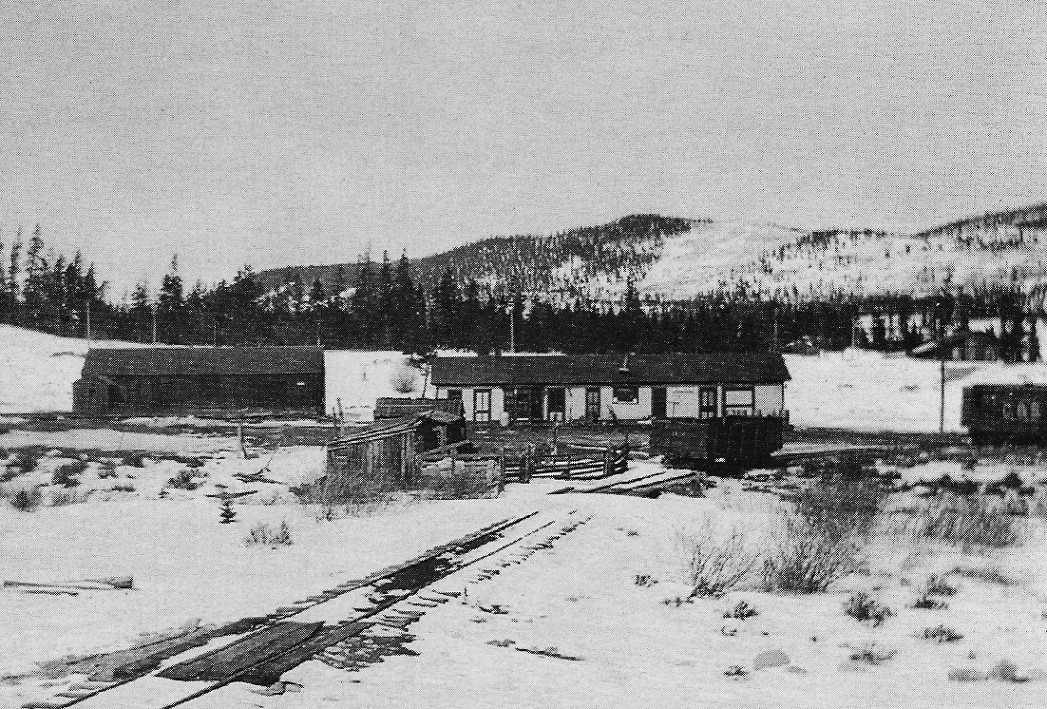 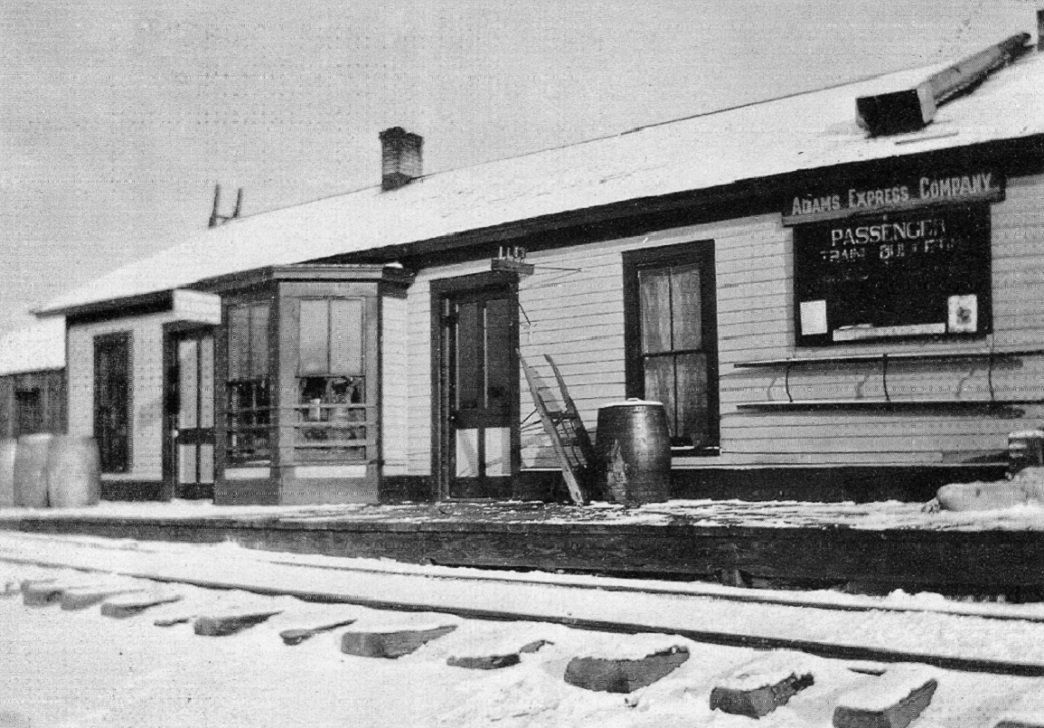 But Fairplay, the next station up the branch toward Como, did have an operator and TOB: 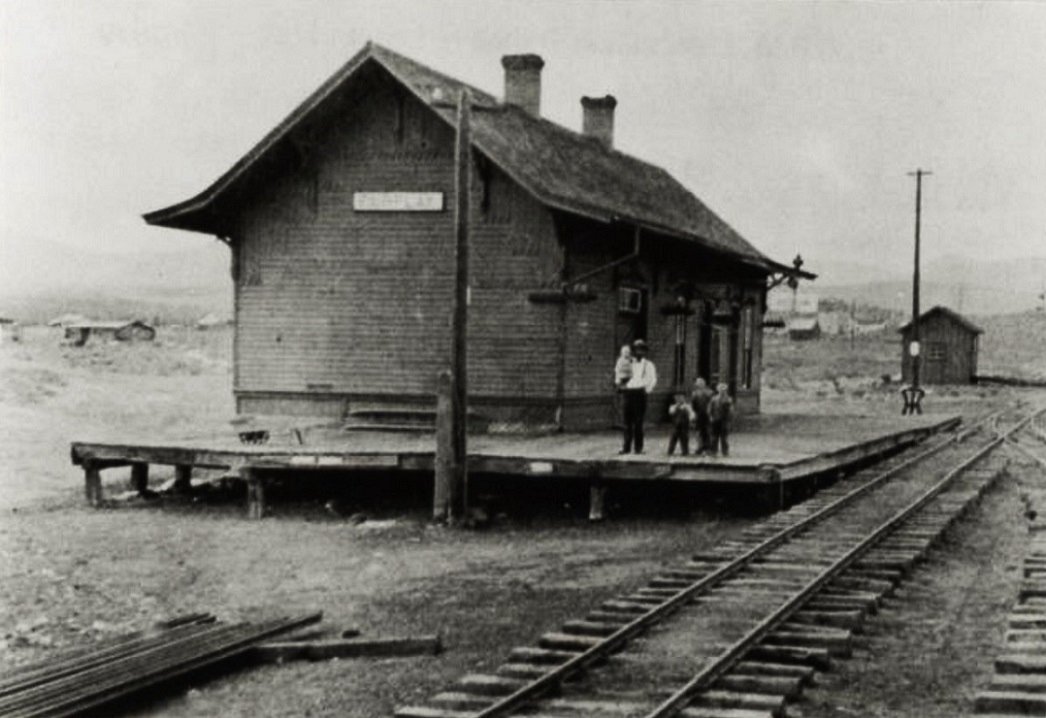 We should also be careful in our definitions of "stations", "depot buildings" and "operating (aka open) depots". --A station was a physical geographical location on the railroad as designated on the timetable, which may or may not have a siding, spur or railroad structures, including water tanks. Some stations where simply signs. --A depot building was a structure to accommodate waiting room space for passengers, a freight house (attached or detached) for handling LCL freight and baggage, and usually office space for the use of agent or operator. It is not clear whether many of the flag stop shelters along Platte Canon were owned by the railroads or private entities. --An operating depot designates an open depot (for part or all of the day, perhaps certain days of the week) with agent/operator on duty, to handle railroad business, and to generate train orders. On Employee Timetables an open depot would often be designated with a "D". If the train crew was required to register at that station, the timetable would be designated with an "R". Some depot structures were always open depots, some where never open (just a shelter for passengers), and others were either open or "flag" depots depending on the year of operation, sometimes the season of a given year.  To illustrate what I'm trying to say in this long-winded post, let's take a hypothetical trip from Denver to Leadville in mid-June of the year 1906. CRA 12, The South Park Line, A Concise History, has the June 10, 1906 C&S Employee Timetable published in the addendum: Leaving Denver, the Leadville bound train had to stop and register at Sheridan Junction, which is listed as having an open depot, with telegraph call sign of "SJ". 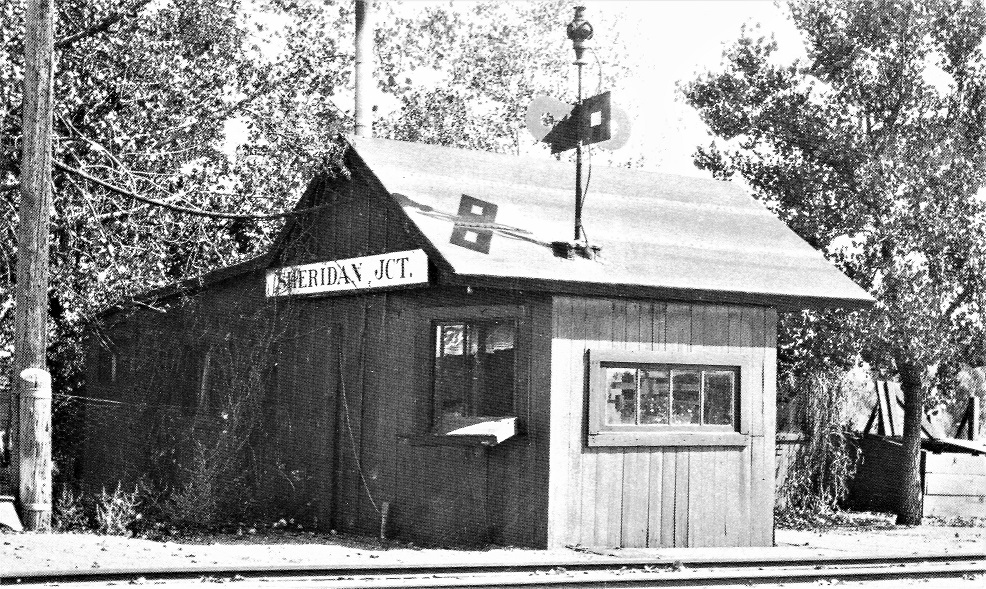 Platte Canyon had a depot structure, but was not an open depot. South Platte, however, was an open depot, call sign "SP", with a agent/operator capable of issuing train orders: 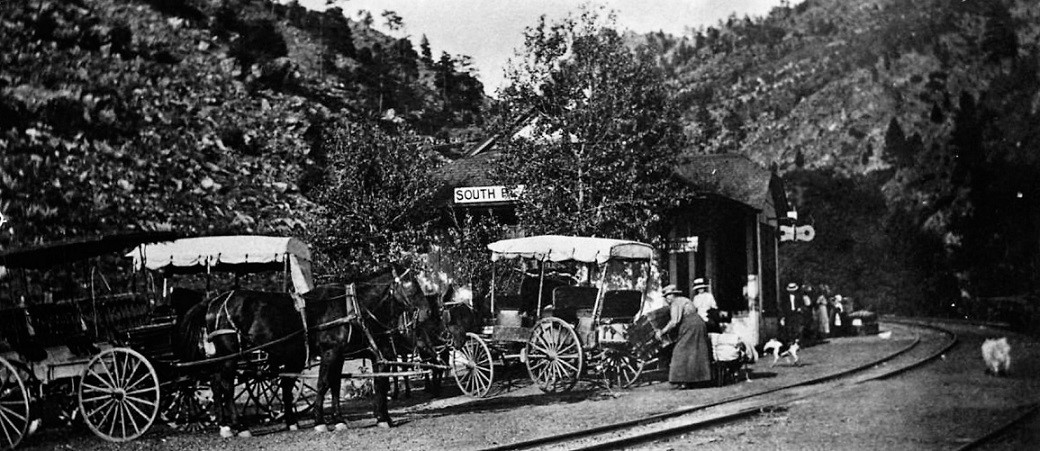 Dome Rock had a depot structure but was not an open depot per timetable, hence no order board: 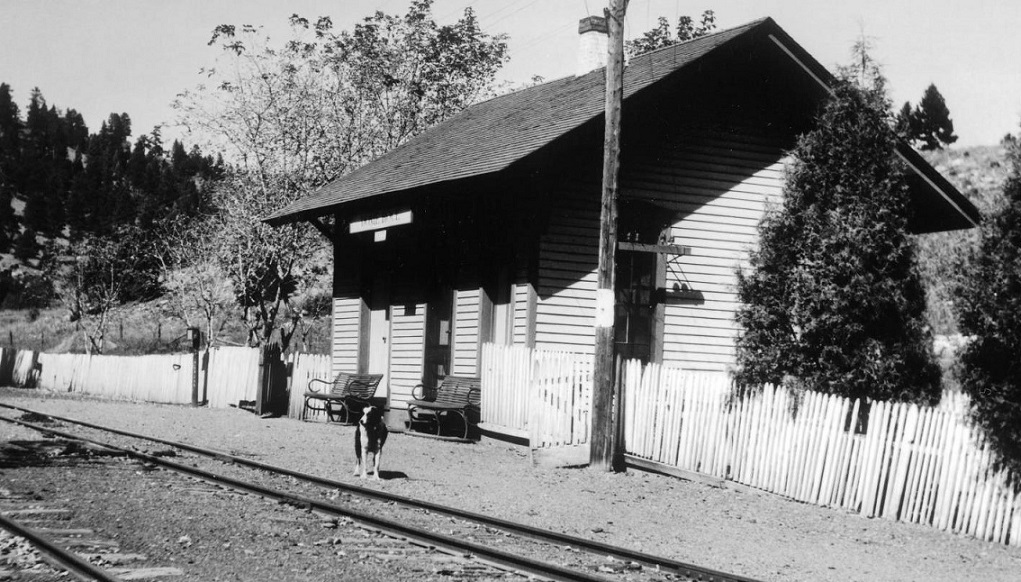 Buffalo was an open depot with TOB; call sign was "FO":  Pine, call sign "NI", was an open depot and crews had to stop and register here (no big deal, they usually had to stop to take coal anyhow). Note the order board is set to red: 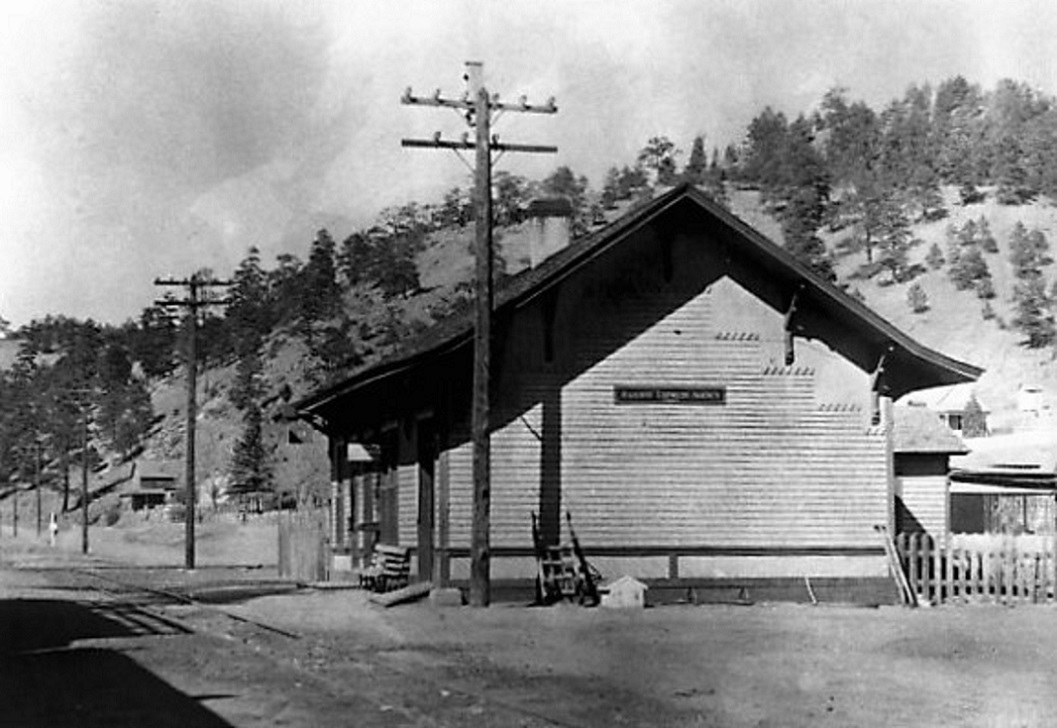 Heading on west, Estabrook per the timetable was not an open depot, the depot structure had no TOB, likely functioned as a flag stop by the year 1906: 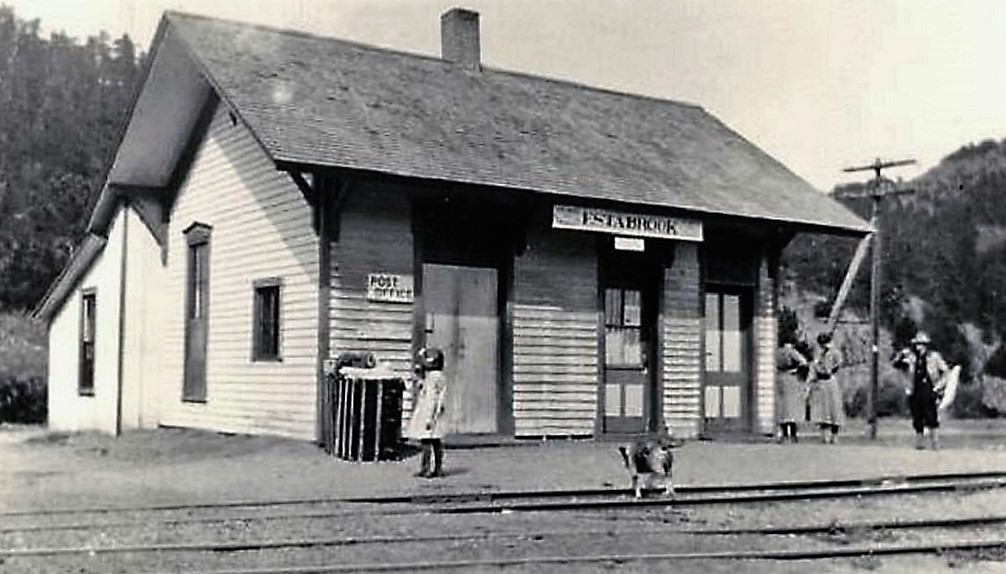 Baileys, call sign "BY" was an open depot in June, 1906; it saw a lot of seasonal tourist traffic for the Kiowa Lodge: 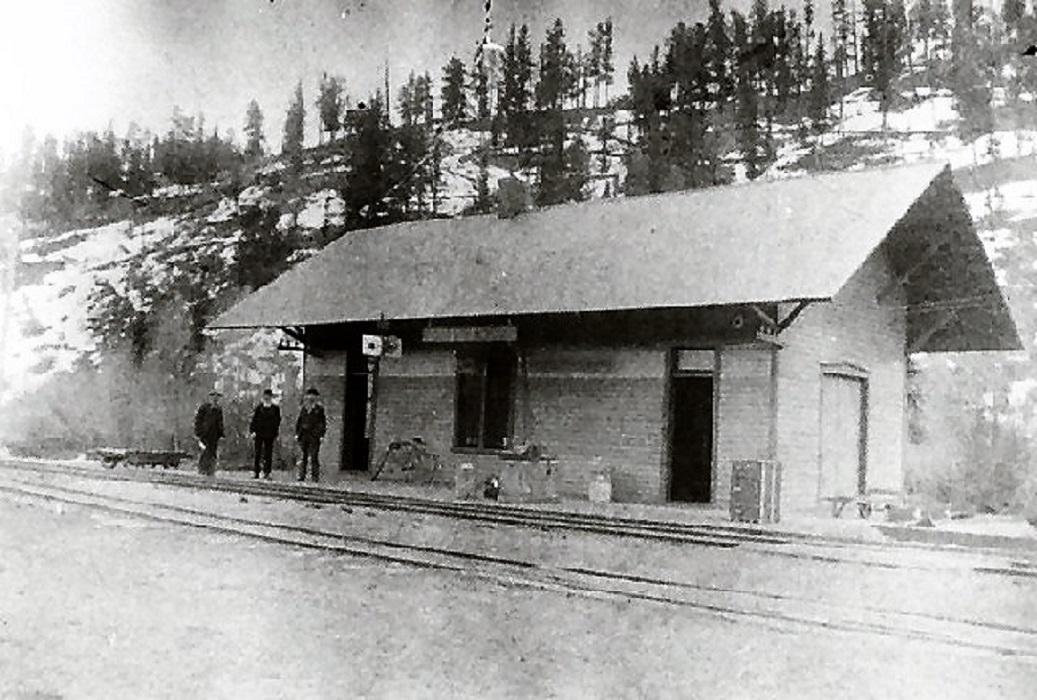 Shawnee was not listed on June 10, 1906, as an open depot. But every period photo that I've seen of Shawnee includes a TOB. Perhaps Shawnee was a seasonal open depot from late June to Labor Day, to cater to tourists and fishermen staying at the Lodge: 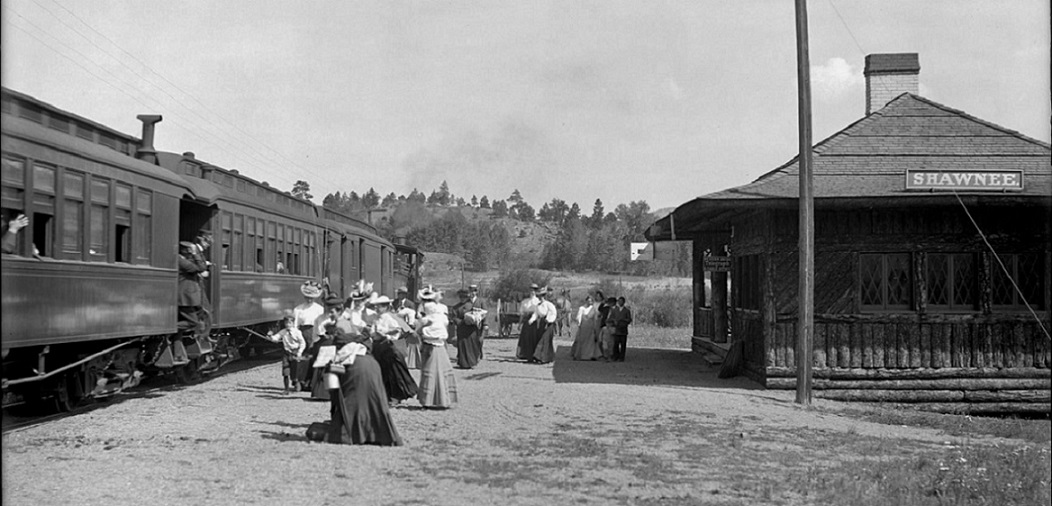 Grant was an open depot, and served as the western terminal for the "Fish Trains". Trains had to stop and register here. Note the vertical TOB, mounted on the roof. The call sign for Grant was an obvious pun: "US".  The timetable of June, 1906, doesn't list open depots at Webster or Kenosha, but we know from the photos earlier in this thread that, in the past, both stations had TOBs and therefore agent / operators. West of Kenosha the next open depot was Jefferson, call sign "JN". As late as the 1920s, Jefferson had a TOB; but by the mid 1930s the station appears closed with the TOB removed. 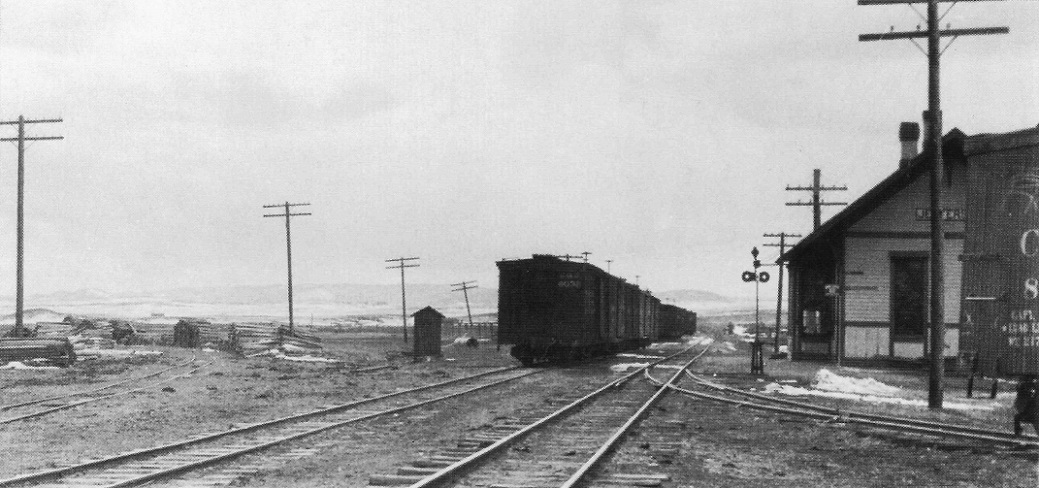 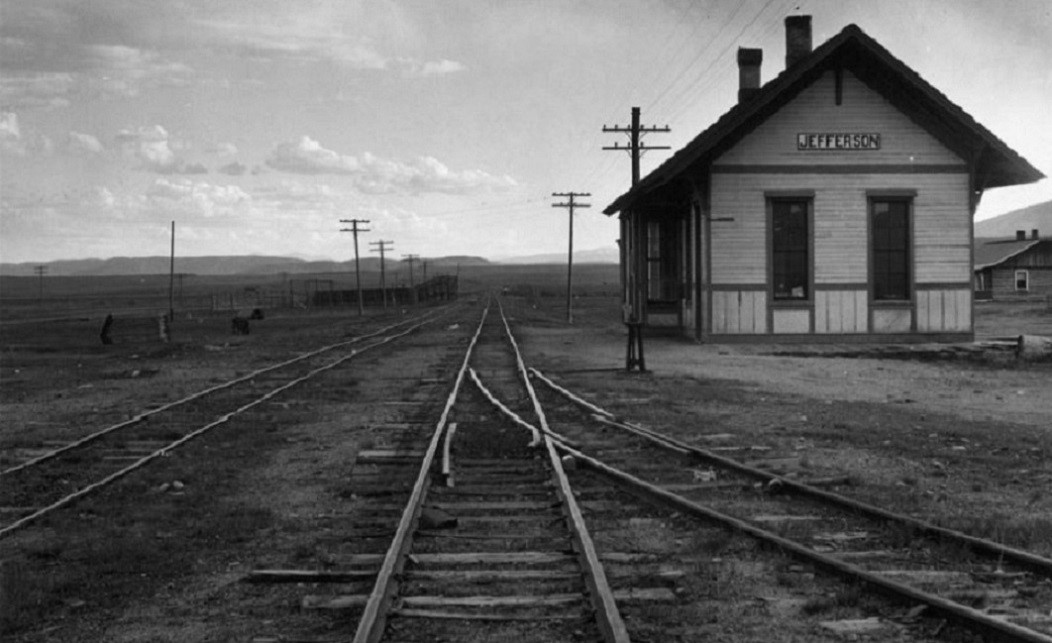 The division point at Como, to my way of thinking, should not have needed a TOB, as nothing ran through. But Chris has demonstrated that it certainly did--still don't understand this. Departing westbound on the Highline, the only open depot listed between Como and Breckenridge was Boreas Pass. I have no photo to illustrate a TOB here. Likely this was a telegraph operator station only, call sign "BO". Breckenridge was an open depot, call sign "HD". another vertical TOB: 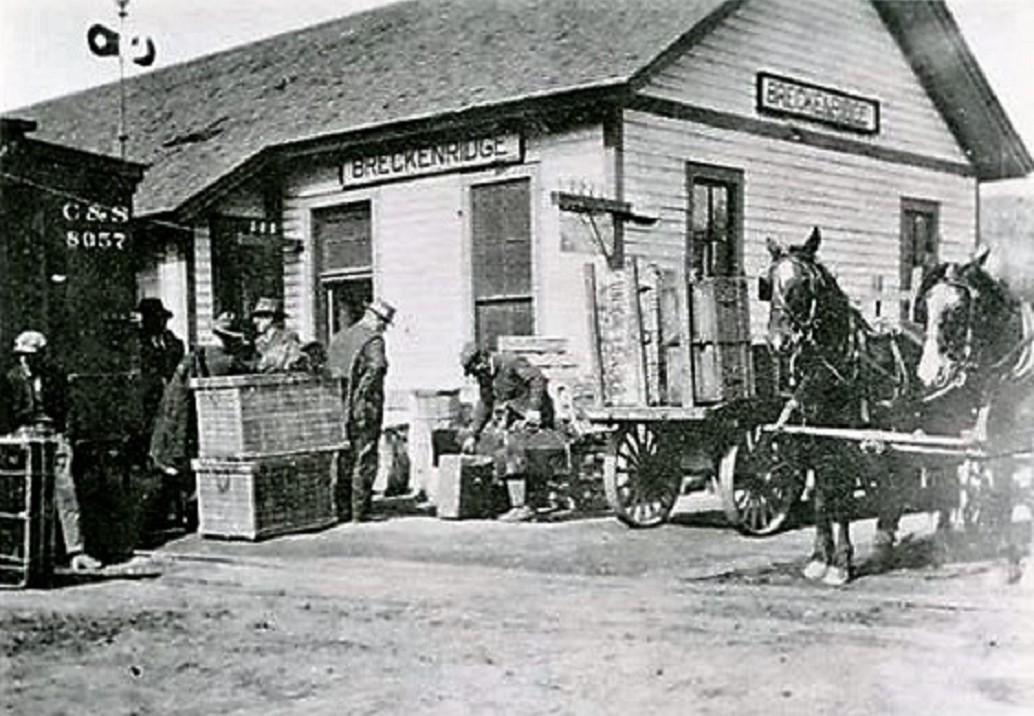 Down the Blue, Dickey (call sign "JD") had a TOB on the back side of the depot, facing the Leadville main. There was also a train register her to stop and sign: 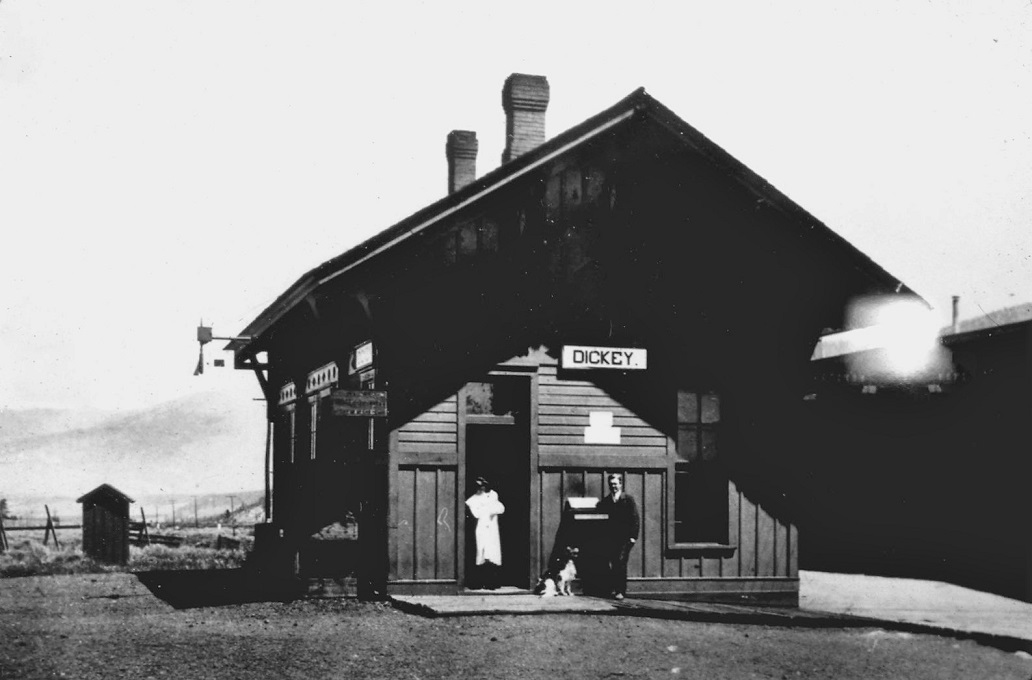 The only open depot on the Tenmile was Kokomo ("KO"): 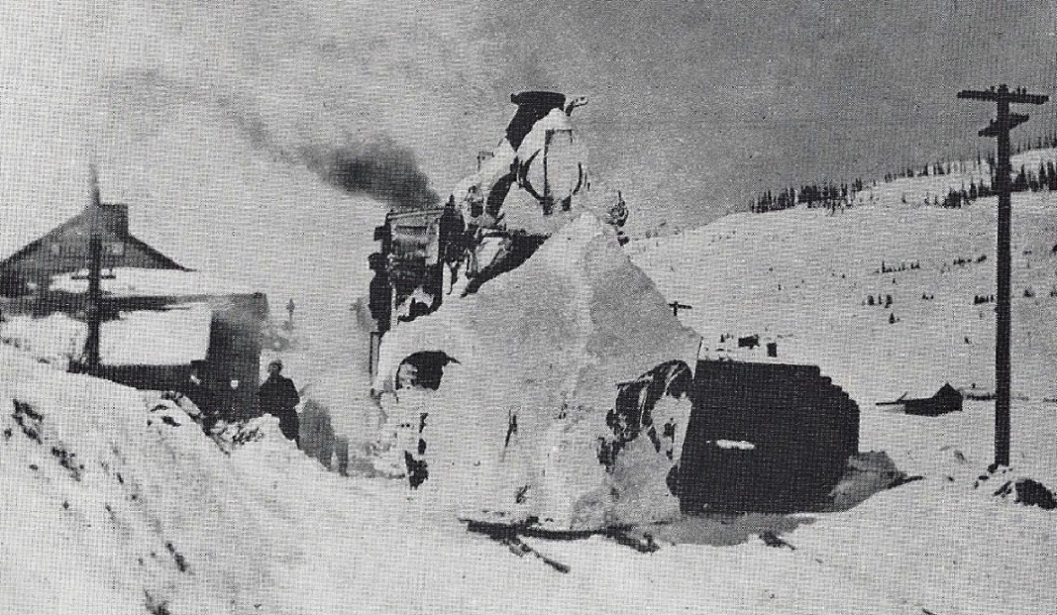 At Climax, trains had to stop and sign the register, but it was not an open depot, apparently no telegrapher on duty as at Boreas, so no call sign. In earlier years, a telegraph office was located to the south of the section house, behind the "Climax" station sign: 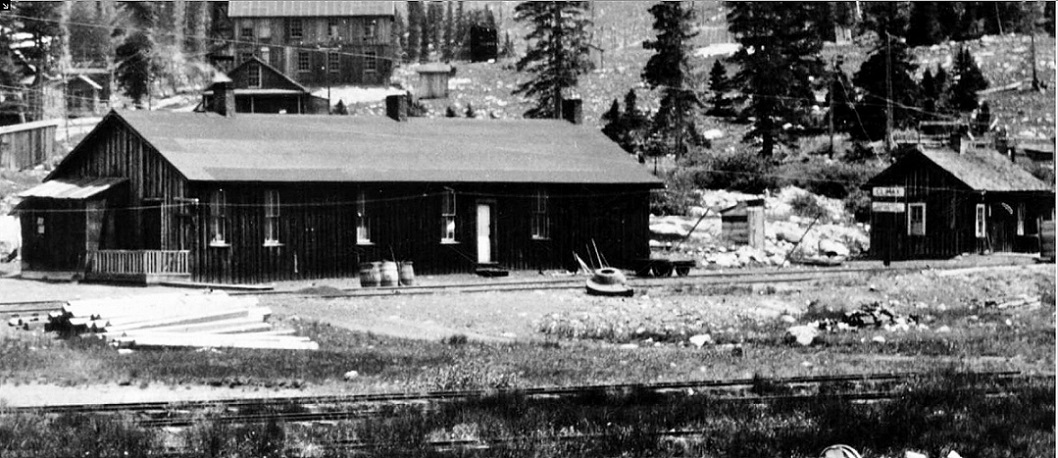 I agree with Chis, I've never seen a photo of the Leadville depot (call sign "VI") with a TOB. This early view from the late 1890s precedes the incorporation of the C&S: 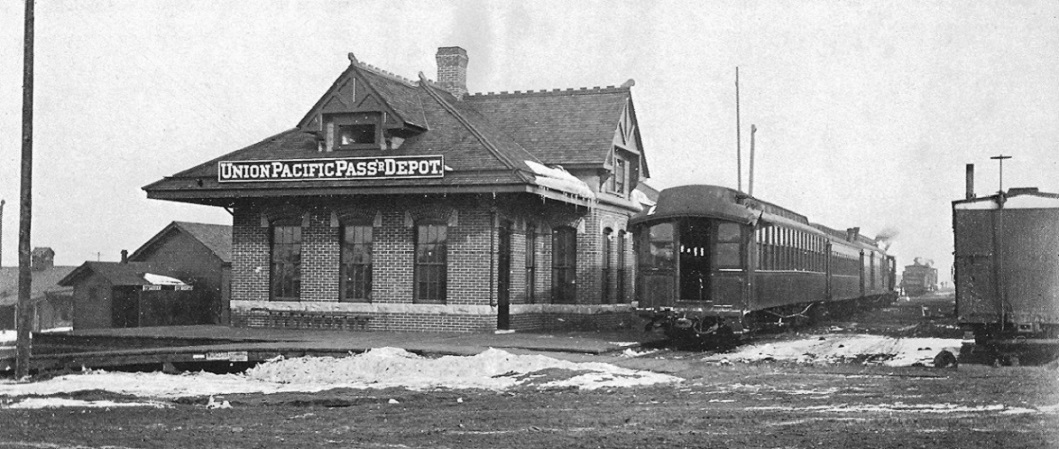 I suspect, as the years passed, as traffic and train frequency diminished, many of these open depots were closed and TOBs were removed. Anyone have a photo of the office at Boreas with TOB to complete illustrating this post? And how about photos of the Silver Plume depot--train order board or no?
Jim Courtney
Poulsbo, WA |
Re: Desperately Seeking Signals: The Saga Of The Train Order Board
|
In reply to this post by ComoDepot
David, please tell me it's your British sense of humor and you're not really serious suggesting the roundhouse was moved?
Sent from my iPad > On Oct 31, 2016, at 5:57 PM, ComoDepot [via C&Sng Discussion Forum] <[hidden email]> wrote: > > If you look closely at the ICC Map 1918 you will see that the stone Roundhouse section does not line up with where it is now, was it moved? > > |
Re: Desperately Seeking Signals: Train Order Boards and "Open Depots"
|
In reply to this post by Jim Courtney
Wow, great research on TOBs, Chris and Jim. Well done!
Cheers, Jeff. |
Re: Desperately Seeking Signals: Train Order Boards and "Open Depots"
|
In reply to this post by Jim Courtney
Silver Plume did indeed have a Banner Order Board, see pg 391 & 393 of Colorado Central by Abbott, McCoy and McLeod. Thanks for continuing this essay, your reward is at the bottom of this post. I think it is amazing just how much detail can be wrung out of the pictures.
 Other Clear Creek boards in later times that are not visible in the very earliest pictures are following (with the exception of Forks Creek). Beaver Brook Z-5975 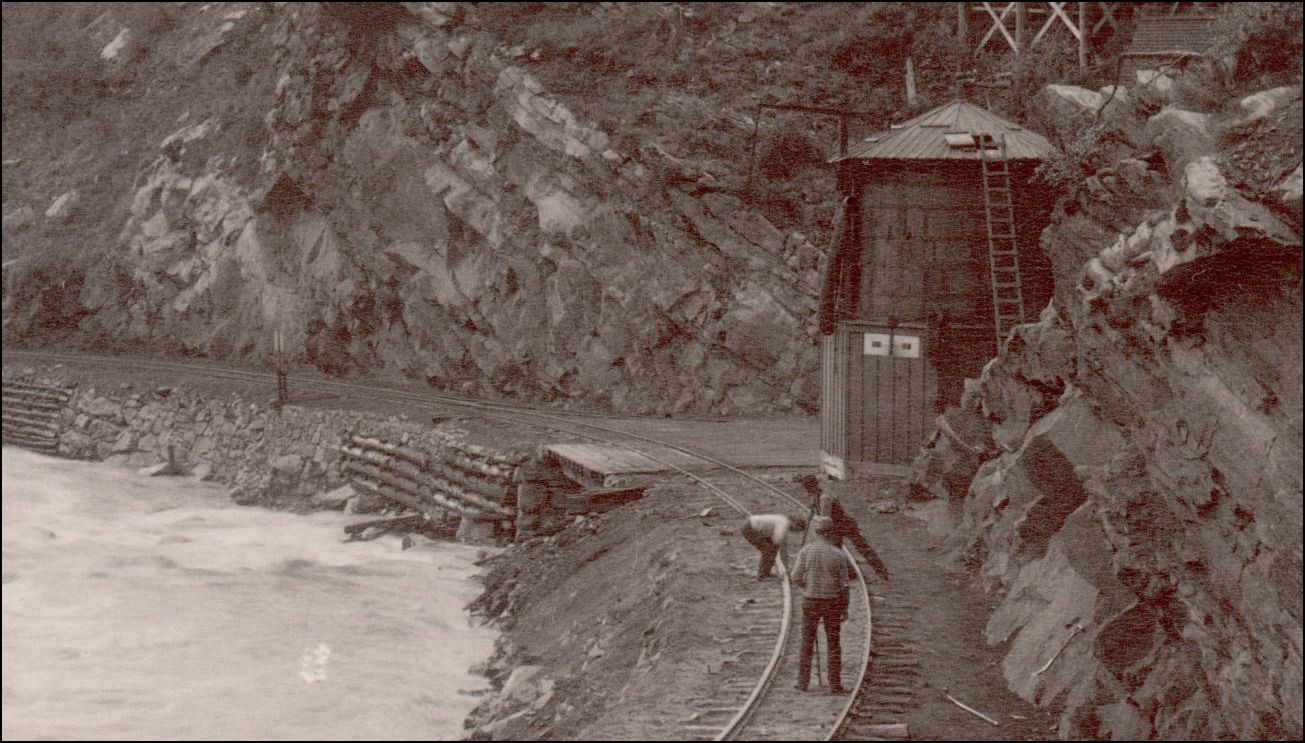 http://digital.denverlibrary.org/cdm/fullbrowser/collection/p15330coll22/id/72020/rv/singleitem/rec/10 Idaho Springs (to the Bitter end) OP-6385 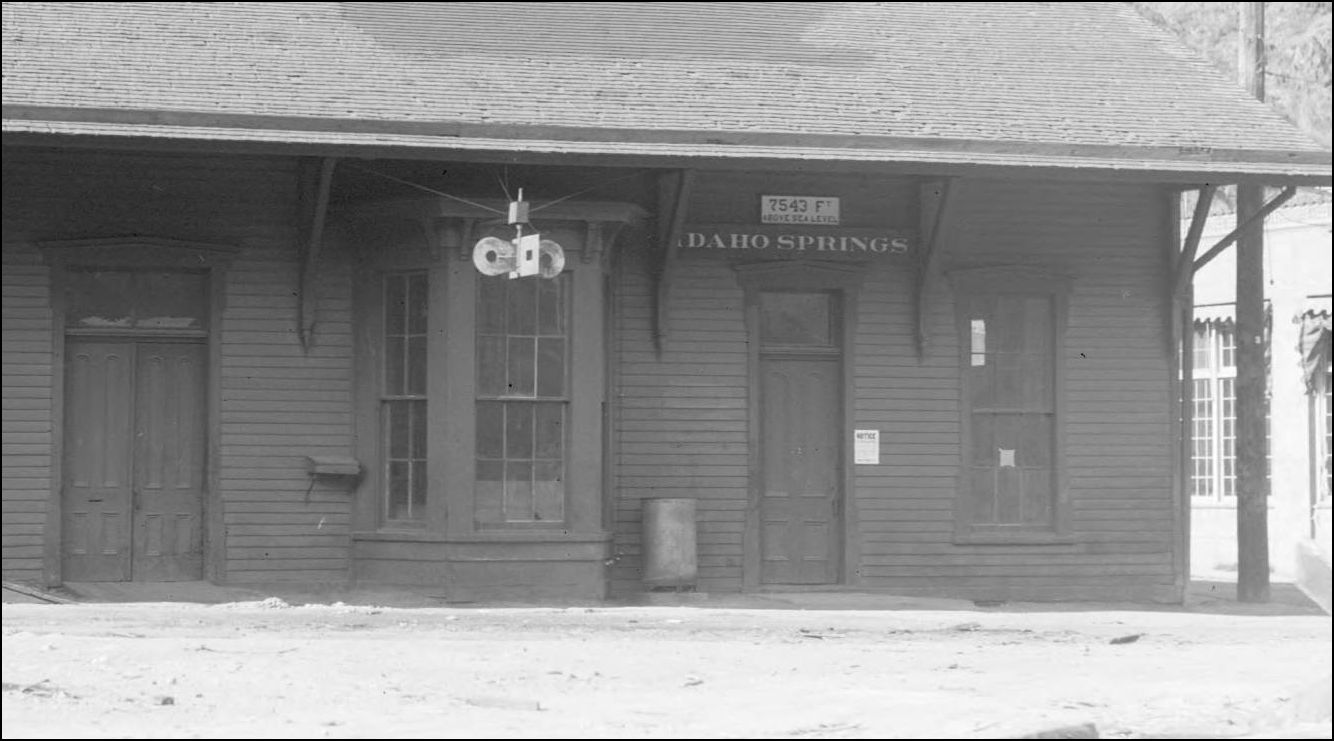 http://digital.denverlibrary.org/cdm/fullbrowser/collection/p15330coll22/id/43685/rv/singleitem/rec/2 Empire X-8209 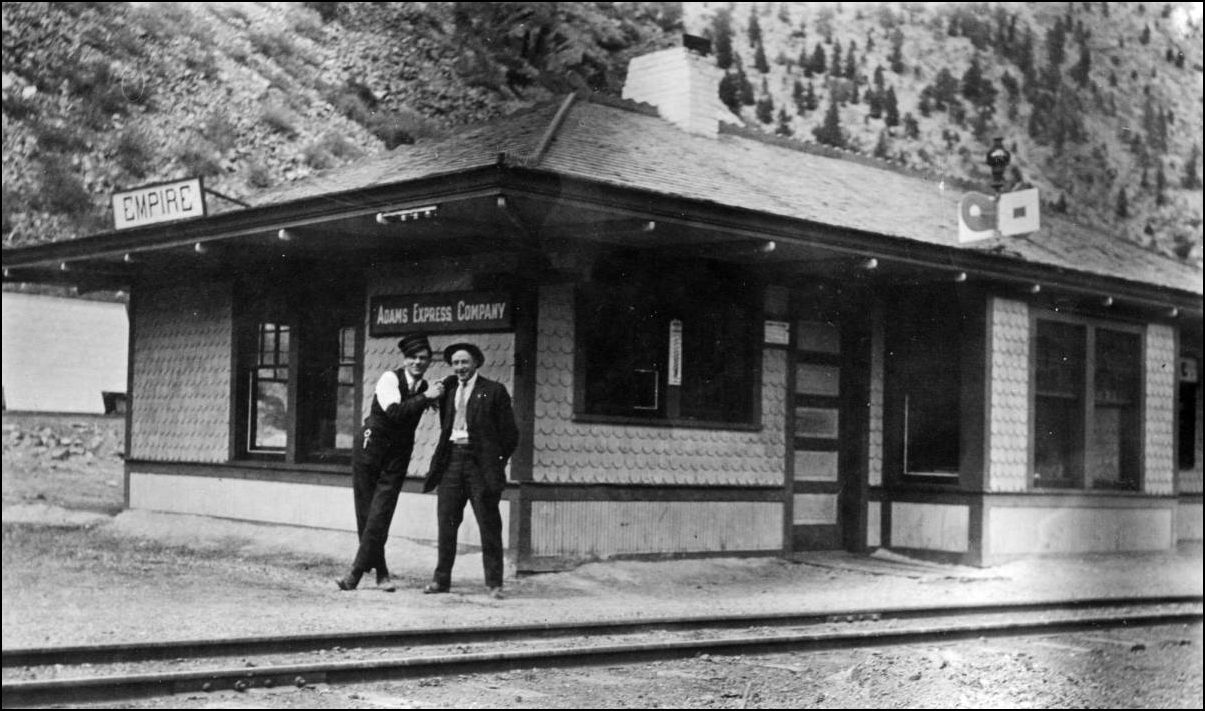 http://digital.denverlibrary.org/cdm/fullbrowser/collection/p15330coll22/id/5484/rv/singleitem/rec/2 Georgetown X-1284 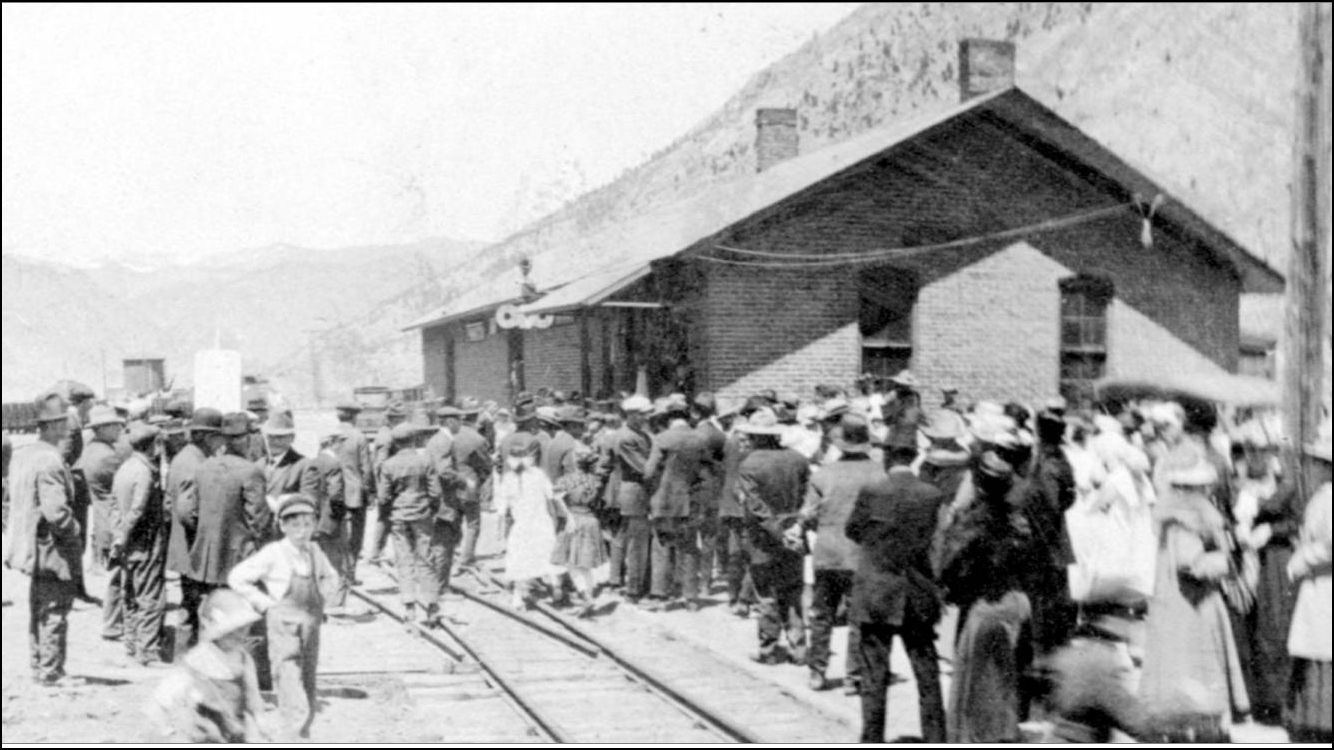 http://digital.denverlibrary.org/cdm/fullbrowser/collection/p15330coll22/id/2204/rv/singleitem/rec/4 And one for Jim  Dillon 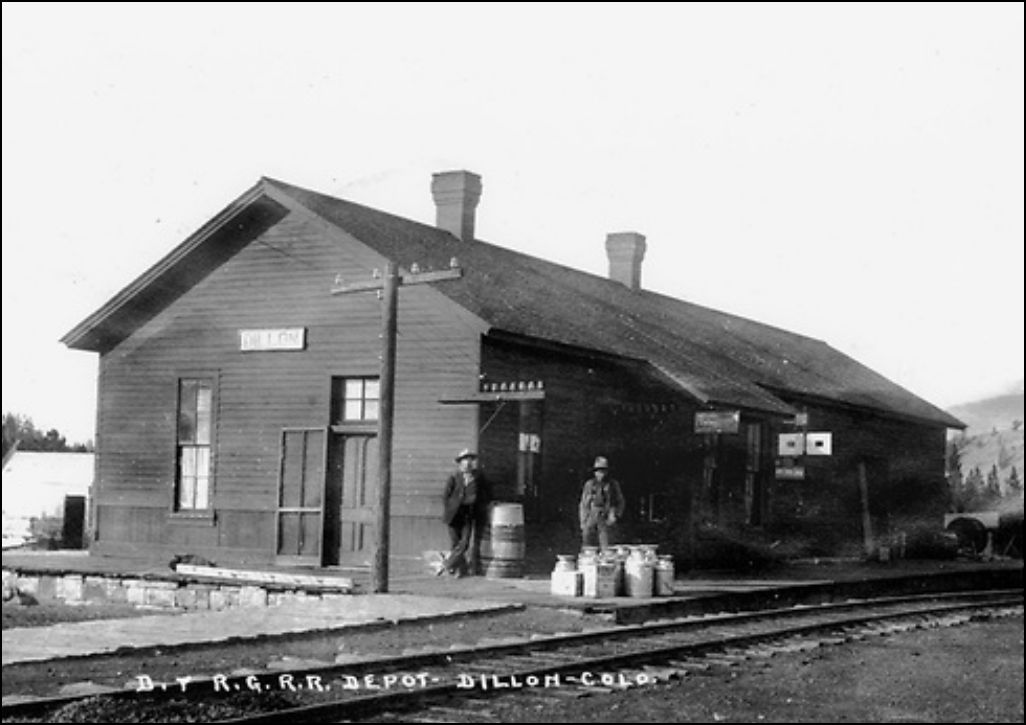 Summit County Historical Society
UpSideDownC
in New Zealand |
Re: Desperately Seeking Signals: The Saga Of The Train Order Board
|
In reply to this post by Chris Walker
Chris,
I can not find fault with your images of stations without TOB`s. Well done, this is the kind of assistance that I have been asking for. I need to look again at where the depot may have come from without the TOB, so it would seem. On the other hand, I do believe this is a TOB in this photo http://ngdiscussion.net/phorum/file.php?1,file=32133 And a member of this group, name forgotten sorry provided this map showing the location of the D&RG station in the location of the building above that apparently seems to have a standard gauge siding. The station is located in the top line of the crosshairs. A little black rectangle. http://ngdiscussion.net/phorum/file.php?1,file=31531 Remember too for it is interesting to note that the former D&RG station buildings are no longer on the corner of 19th & Wynkoop. Remember too that all the Jackson photos of Wynkoop Street demonstrate that the yards of the Union Station are not yet cleared of rubble. So at the time until the Union opened, they needed another station to operate from. I will repeat extract from Kenton Forrest`s book, Denver`s Railroads, "This wooden depot, longer than it was wide, served the D&RG until the bridge over Cherry creek washed out and railroad moved in with the DSP&P." Although the depot is located on the corner of Wynkoop and 19th streets in the map in his book. The description of the depot being longer than wide suits the location of the photo and map I have provided above. So there remains confusion regarding this issue. True? I do not take it as a coincidence that I would find what looks like a Station order board in the location where I was expecting to find it. Although I accept that the railroads in question did not have TOB`s along country stations for some time. I do have to question procedures in Denver. Could it perhaps be that the TOB as I see it in Denver was not to divert trains into the spur but to stop trains on the 3 rail in Wynkoop Street? I accept your analyses, but only to a degree. I do intend to further dissect the Como depot, when I get time. I was taken by your London Junction station with the bay window and I ask readers to compare that image of the bay window with the last photo of the Como depot that you presented. It also seems to have an identical bay window beyond the baggage cart. Sorry, but I could not understand the significance of presenting the image of the Union Station and the German House! You asked what the relevance is to the BV depot? Answer is absolutely none. There was a theory that I held in regard to the BV depot but I now understand that that has no ground. It was to do with the section of wall that contained the ticket window and the section of wall with the window that matches those in the BV depot. Both those sections of wall and one external door had an almost black undercoat of paint that I have not observed anywhere else in the depot. I have gone into these two sections in detail in my blog but did not mention the base colours. My idea was that the Colorado Central depot would have become redundant at the same time as the D&RG depot after the Union opened. My thinking still is that perhaps those two sections of walls were a part of the CC Depot. I had thought that maybe the remainder of the CC depot was sent to be joined an existing depot in BV as photos of the depot under repair in the DSP&P HS website show a room that has been joined across the roof, indicating two buildings brought together. What we all need to be rethinking is the 1884 railroad timetables from an entirely different railroad and location, that were found inside the ticket window section of wall of the Como depot. And I ask David again here in the interest of research and gathering understanding, what is the name of the railroad on those timetables? I hope that you find my reply a satisfactory response to your questions. Thanks, John |
Re: Desperately Seeking Signals: Train Order Boards and "Open Depots"
|
In reply to this post by Jim Courtney
Thanks for the train ride Jim.
I did notice that 4 out of the 14 depots you have pictures of have at least one Dog. I may need to find some for my layout. |
|
In reply to this post by savethecomodepot
Deb,
I am not suggesting the Roundhouse was moved but I was just pointing out that ot can be dangerous assuming even something like an ICC map would be spot on. |
Re: Desperately Seeking Signals: Train Order Boards and "Open Depots"
|
This post was updated on .
In reply to this post by Don Gustavson II
Don,
If modeling Como, you should probably include the famous three-legged dog that lived there, owned by Earl Lintz. 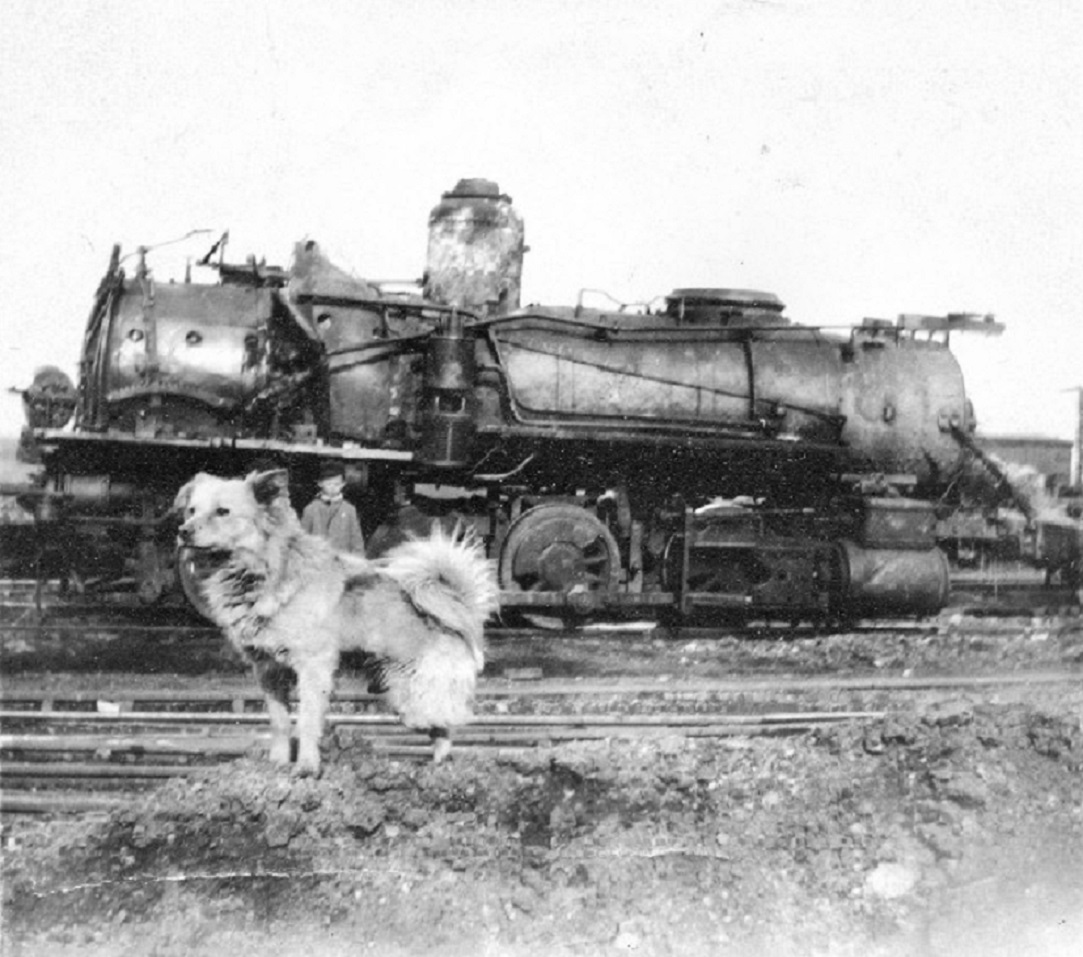 Park County Local History Archives, in the Klingers' South Park's Gunnison Division Memories . . . Might require a bit of surgery on an HO scale dog figure! 
Jim Courtney
Poulsbo, WA |
Re: Desperately Seeking Signals: Train Order Boards and "Open Depots"
|
This post was updated on .
In reply to this post by Chris Walker
Wow! Thanks for the photo of the "D&RG" depot at Dillon (and Jimmy said there wasn't one there!).
 I'm curious, how are you accessing Summit County photos? I can't seem to find the link for online photos. And I'll concede that the Silver Plume depot indeed had a TOB: 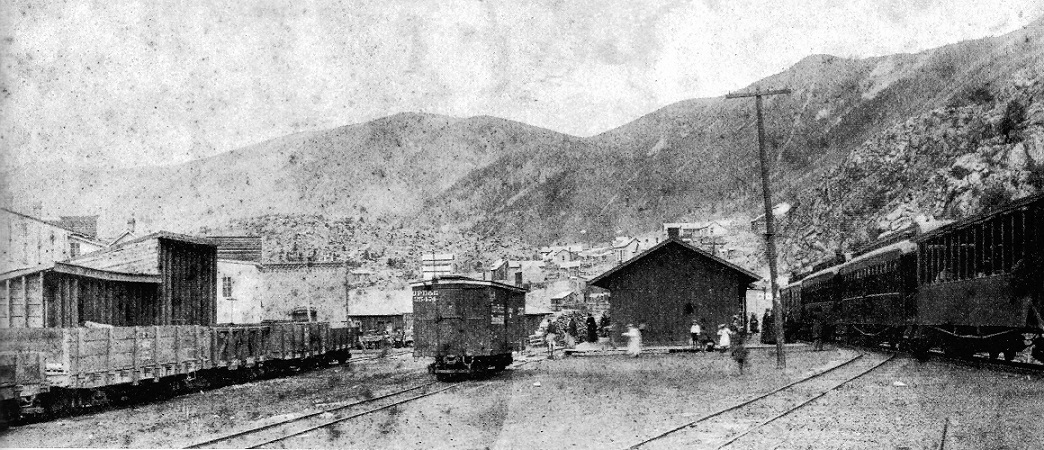 Abbott, et al, Colorado Central Railroad Last night I found my 1904 Clear Creek District Timetable. Open depots with likely TOBs included: Argo Golden Forks --> Blackhawk --> Central City Idaho Springs Empire Georgetown Silver Plume The 1922 Employees Timetable (June 5, 1922) shows that open stations were: Arvada Golden Forks --> Blackhawk --> Central City Idaho Springs Georgetown Silver Plume In June, 1922, the only open depots on the South Park division were: Sheridan Junction Pine Grove Jefferson Como --> Fairplay --> Alma Breckenridge Dillon Leadville All the other South Park stations listed in my post above had been closed. Presumably the TOBs had been removed or left to fall off the buildings by there own devices.
Jim Courtney
Poulsbo, WA |
Re: Desperately Seeking Signals: The Saga Of The Train Order Board
|
In reply to this post by ComoDepot
I was hoping that was the case! But I'm sure "someone" will come up with a reason it was!
-----Original Message-----
From: ComoDepot [via C&Sng Discussion Forum] <[hidden email]> To: savethecomodepot <[hidden email]> Sent: Tue, Nov 1, 2016 10:44 am Subject: Re: Desperately Seeking Signals: The Saga Of The Train Order Board
Deb,
I am not suggesting the Roundhouse was moved but I was just pointing out that ot can be dangerous assuming even something like an ICC map would be spot on. If you reply to this email, your message will be added to the discussion below:
http://c-sng-discussion-forum.41377.n7.nabble.com/Desperately-Seeking-Signals-The-Saga-Of-The-Train-Order-Board-tp6678p6716.html
To unsubscribe from Desperately Seeking Signals: The Saga Of The Train Order Board, click here.
NAML |
Re: Desperately Seeking Signals: Train Order Boards and "Open Depots"
|
In reply to this post by Jim Courtney
Hi Jim,
I’m not sure of the date on the Silver Plume picture, but remember that for some period Silver Plume was not the end-of-the-line — Graymont was. Cheers, Jeff. |
|
In reply to this post by savethecomodepot
I would love to know the early history of the Roundhouse, I assume it was connected to building over what was then Breckenridge Pass. Why stone, why that size, were extensions envisaged, why exactly there.
|
Re: Desperately Seeking Signals: Train Order Boards and "Open Depots"
|
In reply to this post by Jeff Young
Jeff,
Just another thought--perhaps the Pavilion and wye was considered the western terminus of the Clear Creek line, as the excursions and the scheduled "up" passenger trains laid over there, before returning to Denver. The order board at the depot might have been used to tell the eastbound trains to stop at the depot for new orders, though you'd think that the passenger trains would make the stop anyways, to pick up locals enroute to Denver. Jim
Jim Courtney
Poulsbo, WA |
Re: Desperately Seeking Signals: Train Order Boards and "Open Depots"
|
This post was updated on .
I don't know of the collection being online, as the picture is in my collection, was a member of the Summit County Historical society for a time and aquired on one of my visits to Breckenridge, the "D&RG" label took my fancy as I had limited funds and time to aquire items. I still chuckle over that, the very knowledgeable woman in charge was outspoken about it as well. No need to "concede" on the Silver Plume board, Jim, it doesn't show up in many photos.
OP-6296 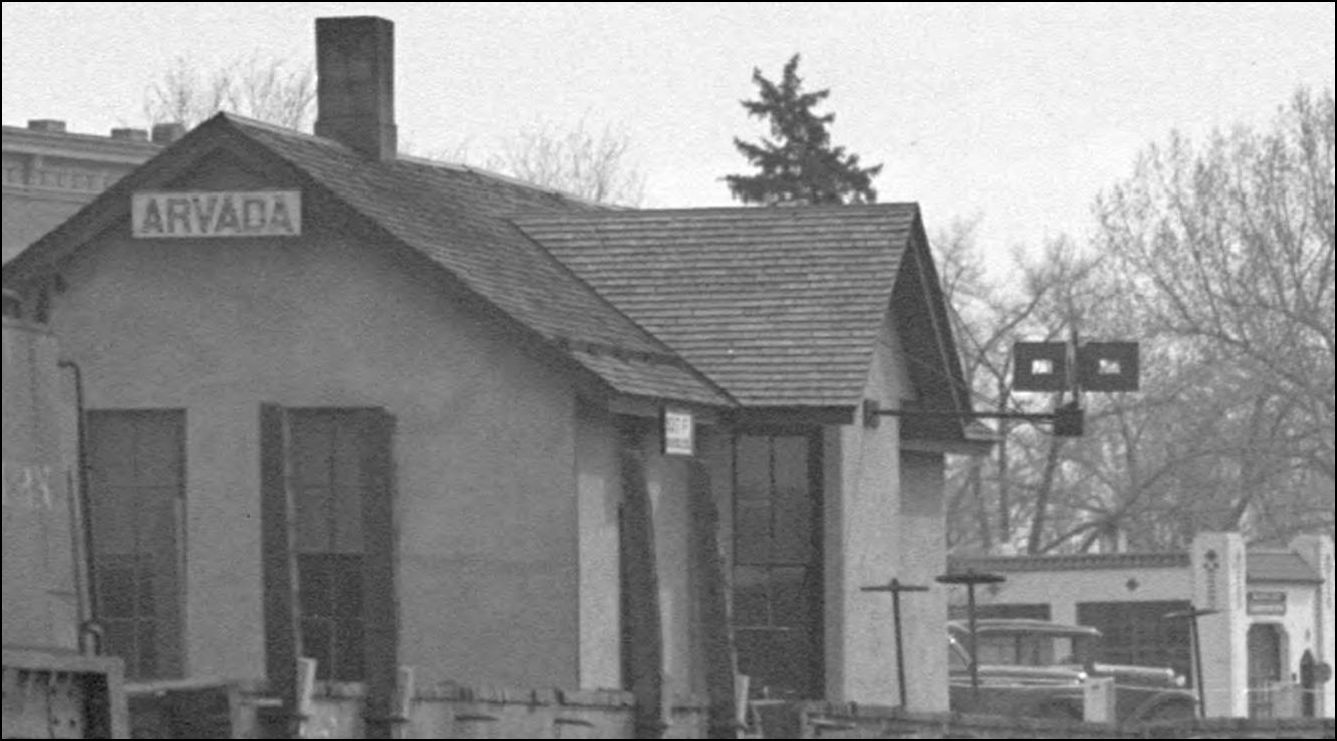 http://digital.denverlibrary.org/cdm/fullbrowser/collection/p15330coll22/id/42730/rv/singleitem/rec/26
UpSideDownC
in New Zealand |
|
I remember being told, but not by whom, that the Como TOB was originally set on red as a default and at some point much later was changed to green.
Would have been easy to do and with now what I know from this thread makes a lot of sense. My supposition is that unless there was another reason when the TOB became of no use the first thing they would do is set it to green. We did find a spare badly rusted handle for a TOB underneath the switchman's shanty, how it ended up there I have no idea. |
Re: Desperately Seeking Signals: Train Order Boards and "Open Depots"
|
Were the order board “flags” (or whatever they’re called) wood or metal?
Thanks, Jeff. |
|
Como one was part steel part cast iron. 7/8th inch pipe fittings.
|
Re: Desperately Seeking Signals: Train Order Boards and "Open Depots"
|
Thanks, David.
I can’t believe no one makes photo-etched brass ones for us modellers. I’ve found laser-cut wood, but they’re going to be really thick, and even the plastic ones would be thicker than brass. Cheers, Jeff. |
|
I never measured them, think of something 1/1 akin to a reasonably sturdy sheet of cardboard.
In modelling terms whatever thinnest material you have is likely to be over scale. |
«
Return to C&Sng Discussion Forum
|
1 view|%1 views
| Free forum by Nabble | Edit this page |

